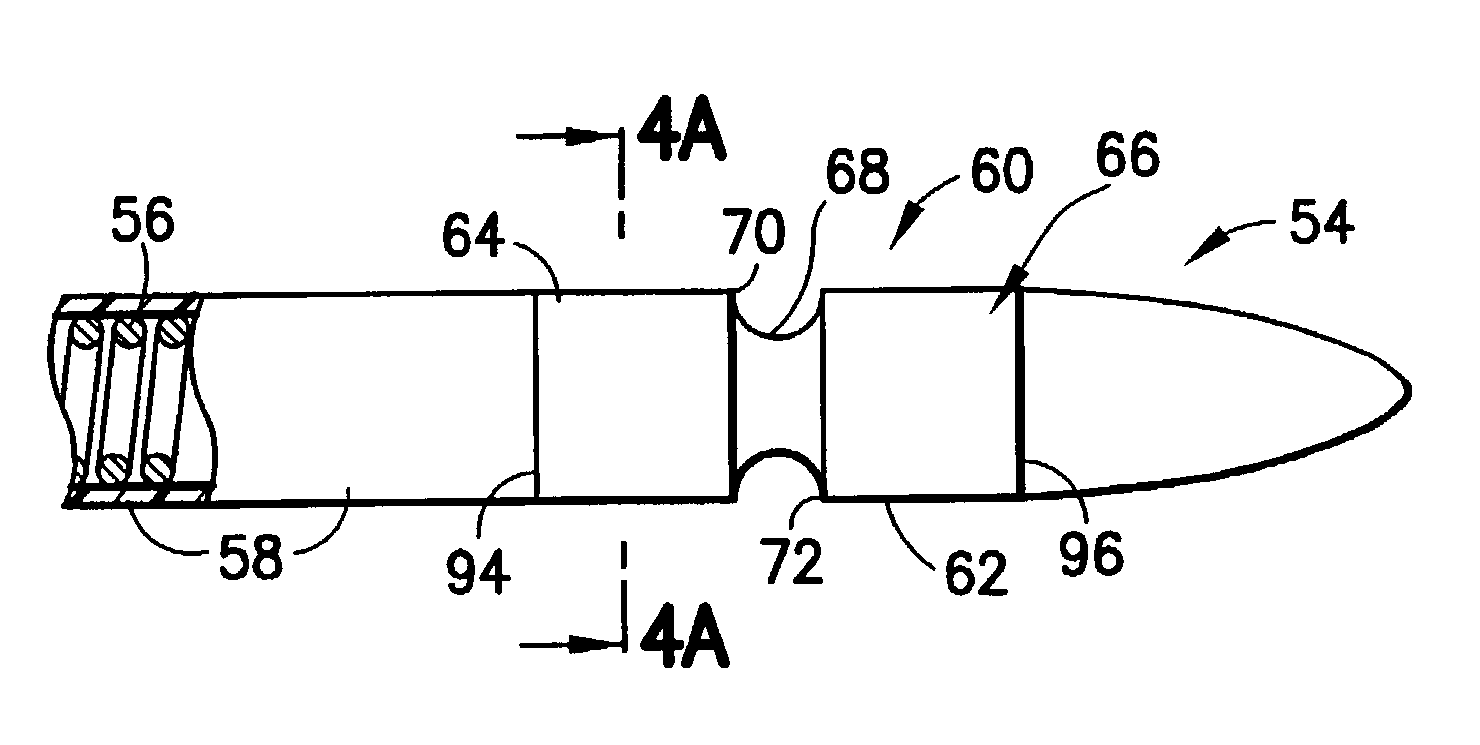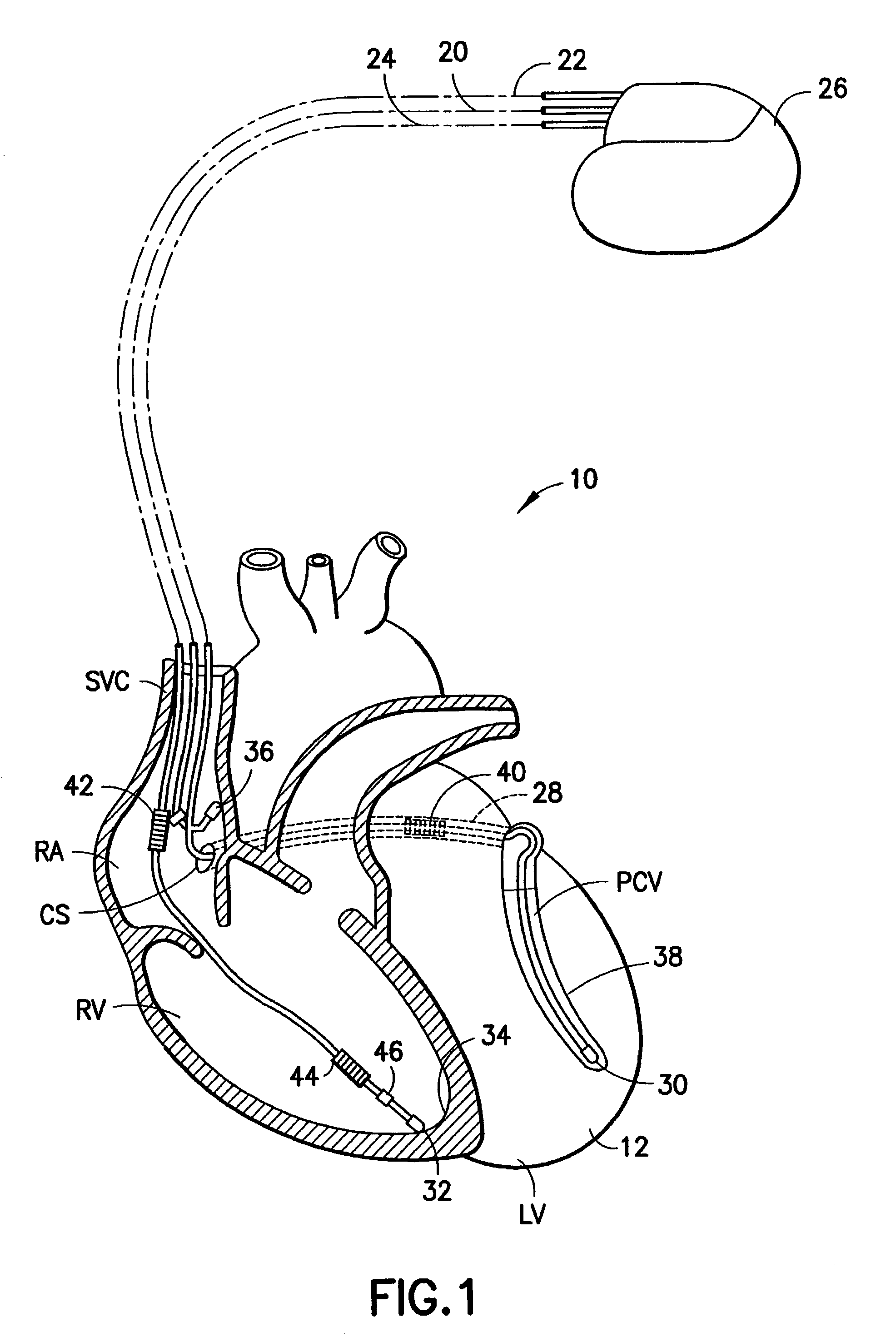Stimulation/sensing electrodes for use with implantable cardiac leads in coronary vein locations
a technology of electrodes and electrodes, which is applied in the direction of internal electrodes, electrical apparatus, therapy, etc., can solve the problems of inability to achieve optimal electrode-tissue orientation, unsatisfactory performance, and no electrode design is designed specifically for achieving optimal electrode-tissue orientation, etc., to enhance the electrical efficacy of the electrode and reduce the polarization
- Summary
- Abstract
- Description
- Claims
- Application Information
AI Technical Summary
Benefits of technology
Problems solved by technology
Method used
Image
Examples
Embodiment Construction
[0049]Refer now to the drawings and, initially, to FIG. 1 in which is shown a diagrammatic perspective view of an implanted system 10 for providing electrical stimulation of a heart 12 incorporating features of the present invention. Although the present invention will be described with reference to the embodiments shown in the drawings, it should be understood that the present invention can be embodied in many alternate forms or embodiments. In addition, any suitable size, shape or type of elements or materials consistent with, and suitable for, the invention could be used.
[0050]In FIG. 1, there are also illustrated implantable leads 20, 22, 24 generally embodying the invention for stimulation of the body, the heart 12 in this instance, by means of a pacemaker 26 or other suitable pulse generating device. This is a cross-section view of a human heart showing the right atrium (RA) and the right ventricle (RV) along with the coronary sinus CS and a vein 28 of the left side of the hea...
PUM
 Login to View More
Login to View More Abstract
Description
Claims
Application Information
 Login to View More
Login to View More - R&D
- Intellectual Property
- Life Sciences
- Materials
- Tech Scout
- Unparalleled Data Quality
- Higher Quality Content
- 60% Fewer Hallucinations
Browse by: Latest US Patents, China's latest patents, Technical Efficacy Thesaurus, Application Domain, Technology Topic, Popular Technical Reports.
© 2025 PatSnap. All rights reserved.Legal|Privacy policy|Modern Slavery Act Transparency Statement|Sitemap|About US| Contact US: help@patsnap.com



